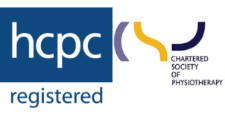Deadlift Top Tips Mike’s top tips for improving your deadlift..
DEADLIFT DO’s and DON’TS
First of all, let me start by saying that I am a big fan of the deadlift. While the deadlift is primarily a posterior chain activity it is also a fantastic full body workout. The deadlift is quite a straight forward movement to teach – feet shoulder width apart, square knee position, chest up, nice and tight in the abdominal area, chest up and out and away up it goes. Simple right? Then why do so many people get injured when performing this exercise? In my experience most of the injuries that occur in the deadlift are due to a combination of 1. training error (like most athletic injuries) and 2. poor technique.
Training error – this tends to fall into one of two categories (usually a combination of the two). The first of these is increasing volume or intensity too quickly. This can very easily happen with the deadlift. There are not many other exercises in the gym where we can engage and use as many different muscles groups as the deadlift. This allows us the opportunity to lift big quick. Without a proper progressive training plan in place it is very easy to jump to a big weight quickly without allowing time for our musculoskeletal tissues time to adapt. This is when number 2 poor technique comes into play. It is very easy to load all the weight of a deadlift into one area of the body typically the low back, glute or hamstrings and we all know that feeling of dread when we feel that sudden twinge of oh-oh and pang of dread about how bad is it who long will I be unable to train for.
Top Tips for achieving a great deadlift.
Gradual steady progress. Take a planned gradual approach to increasing your lift intensity.
Lay some solid foundations and maintain them – use the leg press, hack squat, smith machine squat, knee extension, leg curl, calf raise, abduction, adduction, Lat pull down, trapezius low back and abdominal strengthening exercises to strengthen the individual components.
Work with a physio, coach or personal trainer who knows what they are doing and can help with technique.
Use deadlift variations with reduced range of motion to learn technique, such as stiff leg deadlift, sumo deadlift and trap bar deadlift.
Gradual steady progress
But don’t just take my word for it here is some feedback that I recently received from Underground Gym member Harry Wilson who is 4 weeks out from his first powerlifting event.
“My experience with Mike has been fantastic, through a consultation he was able to do a thorough diagnosis of my issues around my hip and back looking at me as an individual and my needs as a powerlifter.
After identifying the causes he put together a multi-layered recovery program incorporating stretching, and strength and conditioning. By following this I’ve not only been able to recover and am now pain free, but add weight to my lifts and become stronger enabling me to compete in powerlifting competitively.
Mike’s expertise and application of science to an accurate diagnosis has meant I’ve been able to lift confidently and progress, couldn’t recommend him or his team enough.”
You can also book by calling our reception team on 01273121787 or email info@hovephysio.com with any questions.


